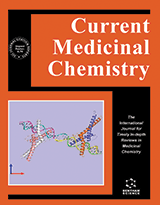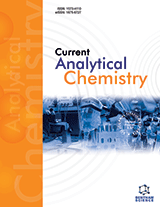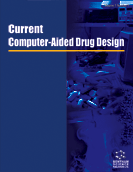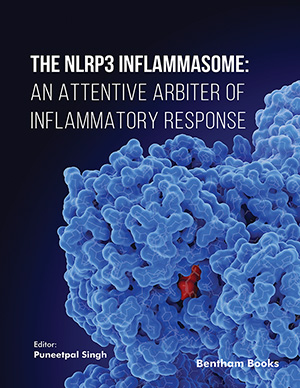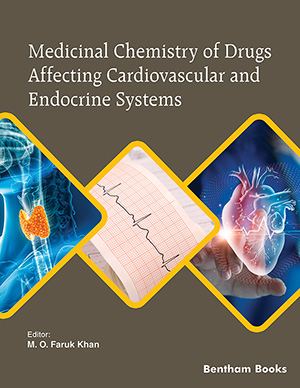Abstract
Alkylating agents such as temozolomide (TMZ) are effective anticancer drugs for treating a variety of solid tumors including melanoma, glioma, and astrocytoma. TMZ exerts its effects mainly via the mutagenic product O6-methylguanine, a cytotoxic DNA lesion. This damage may be repaired by the DNA repair enzyme O6-methylguanine DNA methyltransferase (MGMT), a key player in the resistance of cancers to TMZ. Several strategies are presently being pursued to improve the killing of tumor cells by TMZ, with inhibition of MGMT being the most promising. In this review, we provide an overview of recent advances in this field.
Keywords: Temozolomide, DNA repair, MGMT, cancer therapy, Alkylating agents, anticancer drugs, solid tumors, melanoma, glioma, astrocytoma
Current Medicinal Chemistry
Title:Strategies to Improve the Killing of Tumors Using Temozolomide: Targeting the DNA Repair Protein MGMT
Volume: 19 Issue: 23
Author(s): G. Jiang, L. -T. Li, Y. Xin, L. Zhang, Y. -Q. Liu and J. -N. Zheng
Affiliation:
Keywords: Temozolomide, DNA repair, MGMT, cancer therapy, Alkylating agents, anticancer drugs, solid tumors, melanoma, glioma, astrocytoma
Abstract: Alkylating agents such as temozolomide (TMZ) are effective anticancer drugs for treating a variety of solid tumors including melanoma, glioma, and astrocytoma. TMZ exerts its effects mainly via the mutagenic product O6-methylguanine, a cytotoxic DNA lesion. This damage may be repaired by the DNA repair enzyme O6-methylguanine DNA methyltransferase (MGMT), a key player in the resistance of cancers to TMZ. Several strategies are presently being pursued to improve the killing of tumor cells by TMZ, with inhibition of MGMT being the most promising. In this review, we provide an overview of recent advances in this field.
Export Options
About this article
Cite this article as:
Jiang G., -T. Li L., Xin Y., Zhang L., -Q. Liu Y. and -N. Zheng J., Strategies to Improve the Killing of Tumors Using Temozolomide: Targeting the DNA Repair Protein MGMT, Current Medicinal Chemistry 2012; 19 (23) . https://dx.doi.org/10.2174/092986712802002446
| DOI https://dx.doi.org/10.2174/092986712802002446 |
Print ISSN 0929-8673 |
| Publisher Name Bentham Science Publisher |
Online ISSN 1875-533X |
Call for Papers in Thematic Issues
Advances in Medicinal Chemistry: From Cancer to Chronic Diseases.
The broad spectrum of the issue will provide a comprehensive overview of emerging trends, novel therapeutic interventions, and translational insights that impact modern medicine. The primary focus will be diseases of global concern, including cancer, chronic pain, metabolic disorders, and autoimmune conditions, providing a broad overview of the advancements in ...read more
Approaches to the treatment of chronic inflammation
Chronic inflammation is a hallmark of numerous diseases, significantly impacting global health. Although chronic inflammation is a hot topic, not much has been written about approaches to its treatment. This thematic issue aims to showcase the latest advancements in chronic inflammation treatment and foster discussion on future directions in this ...read more
Cellular and Molecular Mechanisms of Non-Infectious Inflammatory Diseases: Focus on Clinical Implications
The Special Issue covers the results of the studies on cellular and molecular mechanisms of non-infectious inflammatory diseases, in particular, autoimmune rheumatic diseases, atherosclerotic cardiovascular disease and other age-related disorders such as type II diabetes, cancer, neurodegenerative disorders, etc. Review and research articles as well as methodology papers that summarize ...read more
Chalcogen-modified nucleic acid analogues
Chalcogen-modified nucleosides, nucleotides and oligonucleotides have been of great interest to scientific research for many years. The replacement of oxygen in the nucleobase, sugar or phosphate backbone by chalcogen atoms (sulfur, selenium, tellurium) gives these biomolecules unique properties resulting from their altered physical and chemical properties. The continuing interest in ...read more
 29
29
- Author Guidelines
- Graphical Abstracts
- Fabricating and Stating False Information
- Research Misconduct
- Post Publication Discussions and Corrections
- Publishing Ethics and Rectitude
- Increase Visibility of Your Article
- Archiving Policies
- Peer Review Workflow
- Order Your Article Before Print
- Promote Your Article
- Manuscript Transfer Facility
- Editorial Policies
- Allegations from Whistleblowers
- Announcements
Related Articles
-
The Use of the Inhibitory Receptors for Modulating the Immune Responses
Current Pharmaceutical Design In Vivo Application and Tracking of Baculovirus
Current Gene Therapy Development of 96-microwell Plate Assay with Fluorescence Reader and HPLC Method with Fluorescence Detection for High-throughput Analysis of Linifanib in its Bulk and Dosage Forms
Current Pharmaceutical Analysis Review of Procedures Used for the Extraction of Anti-Cancer Compounds from Tropical Plants
Anti-Cancer Agents in Medicinal Chemistry Melittin: A Natural Peptide with Expanded Therapeutic Applications
The Natural Products Journal Review of Recent Clinical Developments and Patents for the Treatment of Autoimmune and Inflammatory Diseases by Mesenchymal Stromal Cells
Recent Patents on Regenerative Medicine Biodistribution and Safety Assessment of Bladder Cancer Specific Recombinant Oncolytic Adenovirus in Subcutaneous Xenografts Tumor Model in Nude Mice
Current Gene Therapy Nanoparticles as Novel Carrier for Brain Delivery: A Review
Current Pharmaceutical Design ADAM19/Adamalysin 19 Structure, Function, and Role as a Putative Target in Tumors and Inflammatory Diseases
Current Pharmaceutical Design Application of Machine Learning in Animal Disease Analysis and Prediction
Current Bioinformatics Editorial (Thematic Issue: GPCR-Targeted Drug Development)
Current Drug Targets Arsenic Trioxide-based Nanomedicines as a Therapeutic Combination Approach for Treating Gliomas: A Review
Current Nanoscience The Role of 4-Thiazolidinone Scaffold in Targeting Variable Biomarkers and Pathways Involving Cancer
Anti-Cancer Agents in Medicinal Chemistry Role of Unani Medicines in Cancer Control and Management
Current Drug Therapy The Past, Current Studies and Future of Organometallic <sup>99m</sup>Tc(CO)3 Labeled Peptides and Proteins
Current Pharmaceutical Design Tumor Dormancy and the Angiogenic Switch: Possible Implications of Bone Marrow- Derived Cells
Current Pharmaceutical Design Dysfunction of Mitochondrial ATP Production As a Target for Personalized Cancer Therapy
Current Pharmacogenomics and Personalized Medicine Antibodies as Crypts of Antiinfective and Antitumor Peptides
Current Medicinal Chemistry Role of Translocator Protein in Renal Ischemia Reperfusion, Renal Preservation and Acute Kidney Injury
Current Molecular Medicine Targeting EGFR in Pancreatic Cancer Treatment
Current Drug Targets


